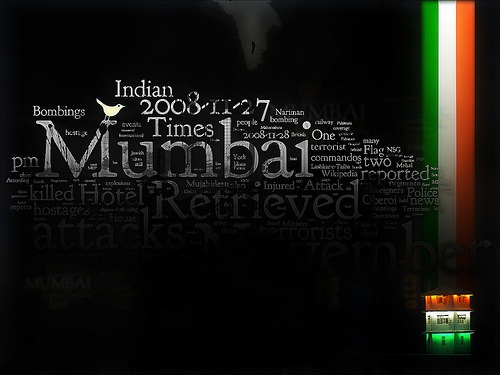When a Tweet From Mumbai Reaches Around the World
Like many people in the U.S., I was out of town for Thanksgiving when I heard about the Mumbai attacks last week. After a Wednesday afternoon spent grocery shopping in Denver, CO, my family and I returned to my relatives’ house, turned on the news, and saw our first reports about the horrific attacks on CNN. Trying to learn more, I pulled up Twitter on a laptop, and searched for reports about what was happening. A flood of information started coming in.
Apparently, I wasn’t alone in using Twitter to follow the crisis. Twitter is a social networking tool that allows users (“Twitterers”) to post 140-character updates (or “tweets”) to their followers (or the public – over 80% of the 6 million users have public pages), either online, via text message or through other tools. This New York Times article notes that, “At the peak of the violence, more than one message per second with the word ‘Mumbai’ in it was being posted to Twitter.” Approximately 80 tweets were sent via SMS (text message) every five seconds (CNN).
Searching for Mumbai (or #Mumbai, a hashtag) using Twitter’s search function, it was fast and easy to find a lot of information: first-hand reports, links to major mainstream news media reports, requests for blood donors at specific hospitals, links to official government information and phone numbers.
There were also some rumors, the most significant and hardest to verify being that the Indian government had asked users to stop tweeting about their activities because terrorists were monitoring the site. But, in the scheme of the velocity and chaos of the attacks, the information being tweeted was overwhelmingly useful, heart-wrenching, and surprisingly accurate.
Citizen Journalism at Its Most Powerful
This was citizen journalism at its most powerful. One incredible example of Twitter’s power during the crisis came when a Mumbai Help blogger used it to ask for help transcribing names of the dead and injured and their locations. People worldwide responded quickly.
Twitter certainly wasn’t the only social media tool that contributed to coverage of the Mumbai attacks. Photos of the attacks were posted on Flickr. Attack locations were updated on Google Maps. The Wikipedia page, November 2008 Mumbai Attacks, was continually updated, and with extensive references. Sites like Global Voices aggregated social media reports. Facebook groups formed.
This also wasn’t the first major crisis where Twitter was used to follow unfolding events. From the bridge collapse in Minneapolis last year to the Thailand airport takeover last week, Twitter was used to report from the ground, to track the status of loved ones, to learn as much as possible, often before mainstream media.
On a more regular, daily basis, I use Twitter to follow thought-leaders in different fields, as well as some friends and business contacts. For me, it’s been a valuable tool to learn about new trends, articles, or events. But last week, it was my connection to India.
You can follow me at twitter.com/laurelhart.





Leave a Reply
Want to join the discussion?Feel free to contribute!